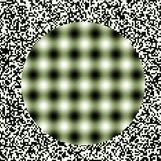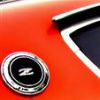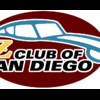A few tips to help with the awakening:
Lubrication
Take the oil spray bar off and blast all of the holes with the straw of a can of carb cleaner. Spray into each hole then spray into the larger holes where the oil flows in from the cam towers. Do this until the bar is flowing clean solvent. Tilting the bar and flowing down helps.
Change the oil and pour extra oil over the valve train. soak it good!
You should probably prime the oil pump. An easy way is to feed a clear vinyl hose into the oil passage behind the oil filter and run the line as far forward in the oil galley as you can. Connect a tight fitting funnel to the open end then hold high and pour oil into teh funnel and let it drain into the hose (with the end now above the oil pump).
Remove plugs and turn the motor over by hand from the crank to ensure it is not seized.
Check electrical wires, connections.
If happy, hook up a remote starter and crank motor from passenger fender with valve cover off. Watch for oil coming out of the oiling bar. Make sure all holes are drizzling oil. It may take a while so make sure you have a good battery. You may have to prime pump more if oil does not come out after ~ 1 minute
Spark
Once you have oil, check for spark and inspect the electrical system. You should have 12V at the coil when the key is turned to start and to on. Replacing plugs, distributor cap, and points is a good step but if you have spark at the plugs, just change them to NGK's for now.
Cooling
Drain radiator and flush engine with water and drain a few times.
You should change the rad hoses and interior heater hoses and water pump as soon as you can but it is not needed to start. Also look at the hose fittings when you pull off the hoses as they corrode to nothing. You should change the thermostat now.
[Fuel]
Remove air breather from carbs (both cover, filter, and back plate)
Remove fuel hoses from fuel rail to fuel bowels and to fuel pump
Remove carb bowl covers and make sure the needle valves are working. More carb cleaner will help. Just make sure the needle valves do not have rubber tips (that may swell up from solvent)
Remove carb domes and clean with solvent (no abrasive). Keep front dome with front carb. Drain the oil in the plunger region.
Carefully remove piston and needle and clean. Again no abrasive and be careful not to bend the needle. Keep front piston with front carb.
Clean carb body
Remove the two small hoses between the fuel bowl and jet and make sure they are not collapsed or filled with tar. Replace if required.
Unscrew the choke lifting arm from each jet and remove each jet. (use proper fitting screw driver and press in firmly when turning)
Clean each jet with carb cleaner (inside passage and outside) then scrub the brass tubes outer surface with a scotch brite pad until it shines.
Clean the passage in the carb body where each jet fits. Test fit each jet in the passage and make sure they can slide up and down with no binding.
Turn the knurled knob under each carb all the way up until they stop. You may wish to spray a penetrating oil on these from below to loosen. You can turn them up and down to work loose. Some carbs have a safety stop underneath that you can remove for the moment
Once the knurled knob tyrns freely and you have turned it all the way up, turn back down 2.5 turns. Use the big bump on the knob to meausre turns. You may have to feel for it.
Reinstall the safety stop and leave ~ 1/4 to 1/2 inch between it and the knurled knob.
Reinstall the jet and connect the choke rod to it but disconnect the choke cables for the moment. Make sure the jets rise all the way up. When you look into both carb bodies the tops of the jets should be seen to be the same distance down in the tube ~ 2.5mm (2.5 turns) if you measure the depth.
Reinstall the pistons and needles in their proper carb body.
Reinstall dome (w/o plunger) while carefully lifting and dropping the piston with your other hand's finger in the front carb hole. The piston should drop all the way to the bridge with no binding. Try to tighten all 4(3) screws evenly rather than just 1 at a time. The piston must not bind so you may have to twist the dome CW or CCW as you tighten the screws.
Install plungers but no oil.
Clean fuel bowls
Install new hoses from fuel bowls to jet. Make sure they don't bend shut.
Install fuel bowl lids.
Remove hoses to fuel rail and clean fuel rail by spraying carb cleaner through it. Spray into sends and return holes. (yes the smaller return line has a fixed orifice at the end.
Install new hose from fuel pump to fuel rail.
Install new fuel filter
Install new hose from fuel filter to fuel pump
Run two 6' fuel lines from fuel filter (send) and from fuel rail (return) into a jerry can next to passenger wheel filled with gas.
With plugs out. Crank the motor to drive fuel pump and send fuel to fuel bowls. Check for fuel in bowls and no leaks in hoses or fuel bowl over flows.
Start
You are now ready to test start!
Install plugs and have fun.
Do a valve adjustment after it heats up.
Measure compression to get an idea of how well it is sealing.
When you get it going for a while. Fill the carb oil tubes with 20W oil (3in1 oil in blue container works fine)
Forget about using gas tank until you remove, clean, inspect and replace hoses between the tank and hard lines. It is probably very rusty and varnished inside. You will be left on the side of the road if you try to use the tank.
Or you can do this to draw fuel from above the sludge layer:
 Subscriber
Subscriber 1Points11,136Posts
1Points11,136Posts







